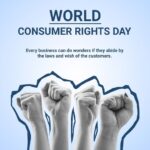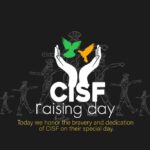🩹 Self-Injury Awareness Day: 7 Heartfelt Reasons Why It Matters More Than Ever
Observed on: March 1
Theme: Understanding, compassion, support, and awareness about self-harm
- 🌼 Introduction
- 📜 History of Self-Injury Awareness Day
- 📅 Timeline of Key Developments
- 💡 Important Facts About Self-Harm
- 🎯 Significance of Self-Injury Awareness Day
- 🙋 Frequently Asked Questions (FAQs)
- Q1. What is self-injury or self-harm?
- Q2. Why do people self-harm?
- Q3. Who is most at risk?
- Q4. How can we support someone who self-injures?
- Q5. What symbols represent SIAD?
- 🌍 Observance Around the World
- 💬 Heartfelt Wishing Messages for SIAD
- 🧠 Important Points to Remember
- 🛠️ Tools & Resources for Help
- 🌱 Daily Life Impact
- 🧭 Real-Life Story (Inspired by True Events)
- 🧾 Conclusion: Break the Silence. Spread the Light.
🌼 Introduction
In a world where mental health conversations are slowly emerging from the shadows, Self-Injury Awareness Day (SIAD) shines a brave light on a subject often misunderstood and stigmatized — self-harm. Observed every year on March 1, this day serves as a beacon of hope, understanding, and solidarity for those silently suffering.
This is more than a day—it’s a global call to compassion. It urges us to replace judgment with empathy, myths with facts, and silence with open dialogue.
📜 History of Self-Injury Awareness Day
Self-Injury Awareness Day began as a grassroots movement in the late 1990s. The exact origin remains unofficial, but mental health organizations and survivors across the globe started using March 1 to create awareness about Non-Suicidal Self-Injury (NSSI) — acts like cutting, burning, or hitting oneself, done not to end life, but to cope with overwhelming emotions.
By the early 2000s, the movement had gained momentum, and international mental health organizations began supporting it officially. Today, countries across the world — including the UK, USA, Canada, Australia, and India — acknowledge March 1 as Self-Injury Awareness Day.
📅 Timeline of Key Developments
| Year | Milestone |
|---|---|
| 1990s | First informal observance of SIAD by mental health advocates |
| 2002 | Global mental health communities begin organizing SIAD campaigns |
| 2010 | Orange ribbon adopted as a symbol of self-harm awareness |
| 2015 | #SIAD trends on Twitter globally for the first time |
| 2020s | Mental health apps and AI-based therapy include NSSI-focused support |
| 2024 | SIAD campaigns focus on youth, LGBTQ+ inclusion, and digital spaces |
💡 Important Facts About Self-Harm
🤯 1 in 5 adolescents will self-harm at least once.
🧠 Self-harm is not a suicide attempt—it’s a coping mechanism for emotional distress.
⏳ Most individuals who self-injure do so in private, making detection difficult.
🔁 Self-injury often coexists with depression, anxiety, PTSD, or trauma history.
🧒 SIAD is especially important for young adults and teens, who form the largest at-risk group.
🌍 There is no cultural or regional barrier—self-injury exists globally.
💬 Talking about self-injury does not encourage it—in fact, it often helps reduce it.
🎯 Significance of Self-Injury Awareness Day
Why it matters deeply in today’s world:
Destigmatizing conversations about mental health and self-harm
Encouraging early intervention and non-judgmental support
Bridging the gap between silence and therapy
Empowering survivors to share their stories
Promoting empathy over shame
This day reminds us that even invisible wounds need care.
🙋 Frequently Asked Questions (FAQs)
Q1. What is self-injury or self-harm?
Self-injury is the act of deliberately hurting oneself — physically — to manage emotional pain or stress. It is not always linked to suicidal intent.
Q2. Why do people self-harm?
To:
Release emotional pain
Express feelings that are hard to put into words
Regain a sense of control
Punish oneself due to guilt or low self-worth
Q3. Who is most at risk?
Teenagers and young adults
People with depression, trauma, anxiety, or personality disorders
Members of LGBTQ+ communities facing rejection or stigma
Survivors of abuse
Q4. How can we support someone who self-injures?
Listen without judgment
Avoid shaming or punishing
Encourage professional help
Be patient — healing is not linear
Q5. What symbols represent SIAD?
🧡 Orange ribbon – for awareness
✍️ Drawing butterflies or writing positive affirmations on wrists
🔸 Wearing wristbands or sharing personal stories
🌍 Observance Around the World
SIAD is observed through:
Community outreach programs
Mental health webinars and live discussions
School and college awareness campaigns
Social media storytelling (#SIAD, #YouAreNotAlone)
Workshops for teachers and caregivers
Therapy sessions and survivor panels
💬 Heartfelt Wishing Messages for SIAD
💌 “Your pain is real, your journey is valid. On this Self-Injury Awareness Day, we see you, we support you.”
🧡 “You don’t have to bleed to feel alive. Your scars don’t define you—your strength does.”
🌟 “Healing is messy, non-linear, and beautiful. Never be ashamed of surviving.”
🤝 “Talk. Share. Heal. You are not alone on this journey.”
🌻 “Choose kindness—for yourself, and for others.”
🧠 Important Points to Remember
SIAD is March 1 every year
Self-injury is a coping mechanism, not attention-seeking
Early support can prevent escalation
Open conversations reduce stigma
Healing takes time — and professional help matters
🛠️ Tools & Resources for Help
International helplines: WHO, Lifeline, Samaritans
India: iCall, Fortis Stress Helpline, Vandrevala Foundation
Mobile apps: BetterHelp, Calm Harm, Wysa, MindDoc
Websites: NAMI.org, Mind.org.uk, MentalHealth.org
🌱 Daily Life Impact
On Individuals:
Creates space for emotional honesty
Promotes seeking healthy coping mechanisms like journaling, music, or therapy
Builds resilience and self-awareness
On Families:
Encourages open family dialogues
Prevents misinterpretation of behavior as “rebellious” or “dramatic”
Allows caregivers to respond with love, not discipline
On Society:
Reduces suicide rates and emergency hospital admissions
Builds inclusive mental health infrastructures
Trains teachers, parents, and healthcare workers to identify signs early
🧭 Real-Life Story (Inspired by True Events)
“I used to wear full sleeves, even in summer. Not because I liked it—but because I was hiding cuts. I didn’t know how to explain my pain. But one friend asked me gently, ‘Are you okay?’ That question changed my life. Therapy helped me find better ways to cope. Today, I speak at my college about self-harm awareness. No one should feel alone like I once did.”
This story reflects why awareness saves lives.
🧾 Conclusion: Break the Silence. Spread the Light.
Self-Injury Awareness Day is not just about preventing self-harm—it’s about creating a world that understands pain, offers help, and does not judge. It’s about offering compassion in place of shame, and support in place of silence.
If you or someone you know is struggling — you are not broken. You are not weak. You are human.
Let us use this day not just to speak — but to listen, love, and uplift.








